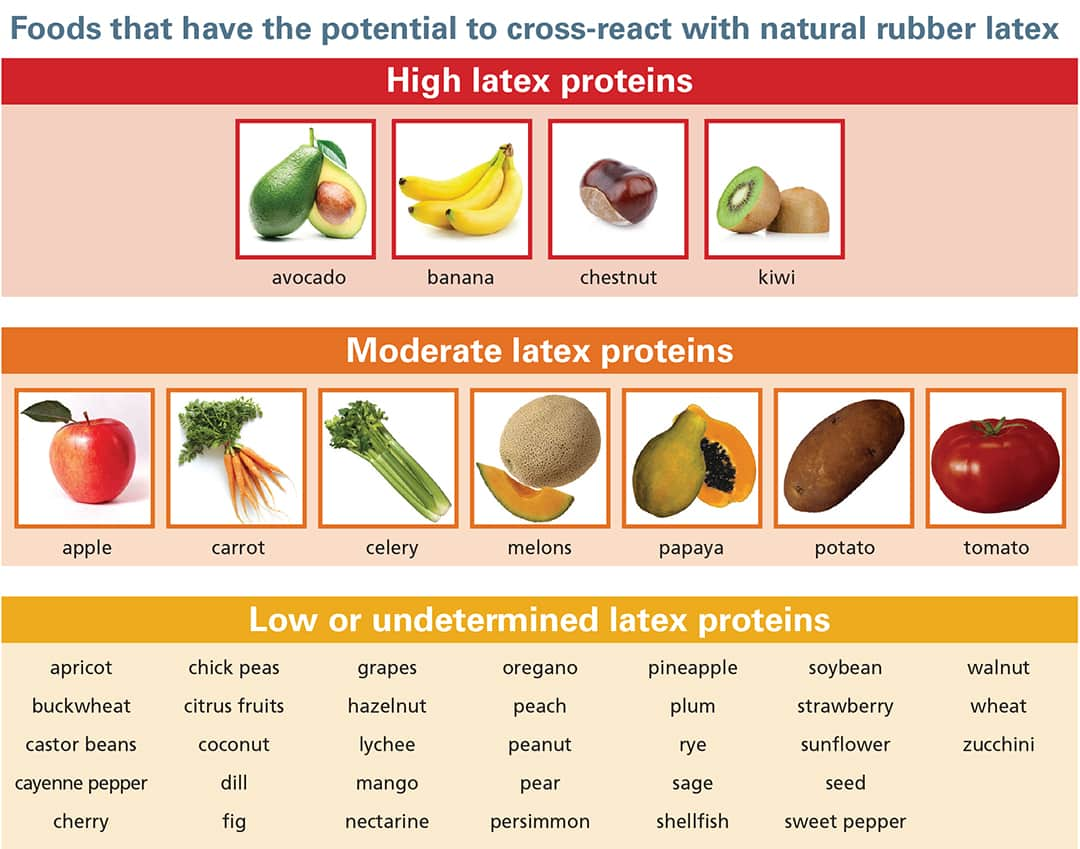Latex Allergy and Foods
- Home
- |
- A Complete Guide to Allergies
- |
- Complete Guide to Latex Allergy
- |
- Latex Allergy and Foods
If you have a latex allergy, you can sometimes have reactions to certain fruits and vegetables. These reactions occur in 30-50% of people with latex allergy.
Latex reactions to certain fruits and vegetables can happen because these foods share similarly structured proteins that the body mistakenly recognizes as latex. This, in turn, causes allergic reactions in latex-sensitive people.
These allergic reactions can occur not only after eating these foods but also after touching or smelling them.
What are latex cross-reactive foods?
Many foods have similar proteins to latex even if they don’t contain actual latex. When a person with a latex allergy eats food with these proteins, they may have an allergic reaction. The foods are called latex cross-reactive foods.
Prevention is the key with cross-reactive foods. Once a food is identified as a latex cross-reactive food, the individual with latex allergy should avoid exposure to that food.
What is latex-fruit syndrome?
The association between latex sensitivity and food allergy is often referred to as the latex-fruit syndrome. Many vegetables have also been identified as being cross-reactive with latex proteins.
What are foods to avoid with a latex allergy?
Embed infographic for latex-cross reactive foods
The foods shown below are grouped based on high, moderate or low/undetermined association to latex cross-reactions. It is likely that other foods not listed here may also be cross-reactive with latex. Remember that each person reacts differently to allergens.
Low or undetermined cross-reactivity with latex
- Apricot
- Buckwheat
- Cassava/Manioc
- Castor bean
- Cherry
- Chick pea
- Citrus fruits
- Coconut
- Cucumber
- Dill
- Eggplant or Aubergine
- Fig
- Goji berry or Wolfberry
- Grape
- Hazelnut
- Indian jujube
- Jackfruit
- Lychee
- Mango
- Nectarine
- Oregano
- Passion fruit
- Peach
- Peanut
Download this page as a pdf
- Pear
- Peppers (Cayenne, Sweet or Bell)
- Persimmon
- Pineapple
- Pumpkin
- Rye
- Sage
- Strawberry
- Shellfish
- Soybean
- Sunflower seed
- Tobacco
- Turnip
- Walnut
- Wheat
- Zucchini
Moderate cross-reactivity with latex
- Apple
- Carrot
- Celery
- Melons
- Papaya
- Potato
- Tomato
High cross-reactivity with latex
- Avocado
- Banana
- Chestnut
- Kiwi

Visit Our Support Pages on Latex Allergies
Latex Allergy Items in Online Store
Latex Allergy News
Latex Allergies and Vaccines
Latex Allergy Posters
& Infographics
